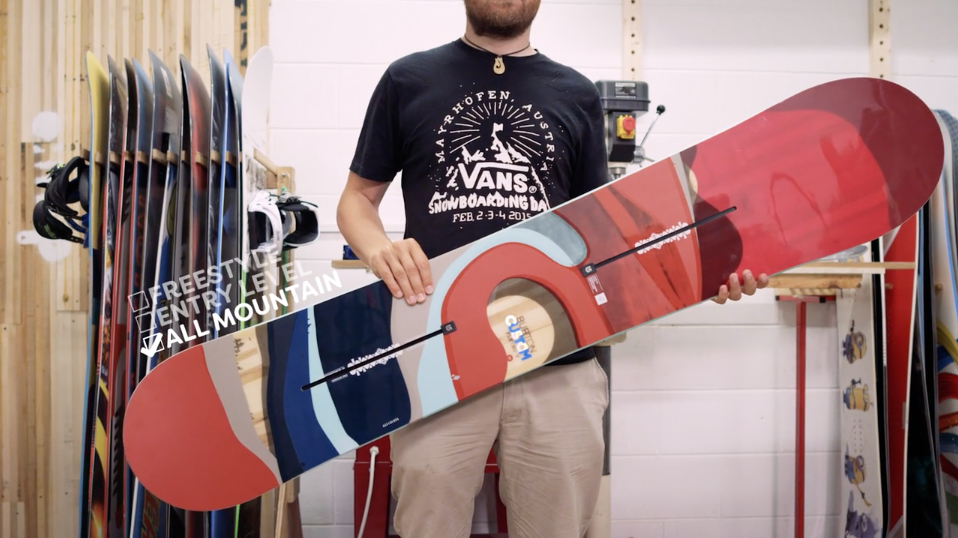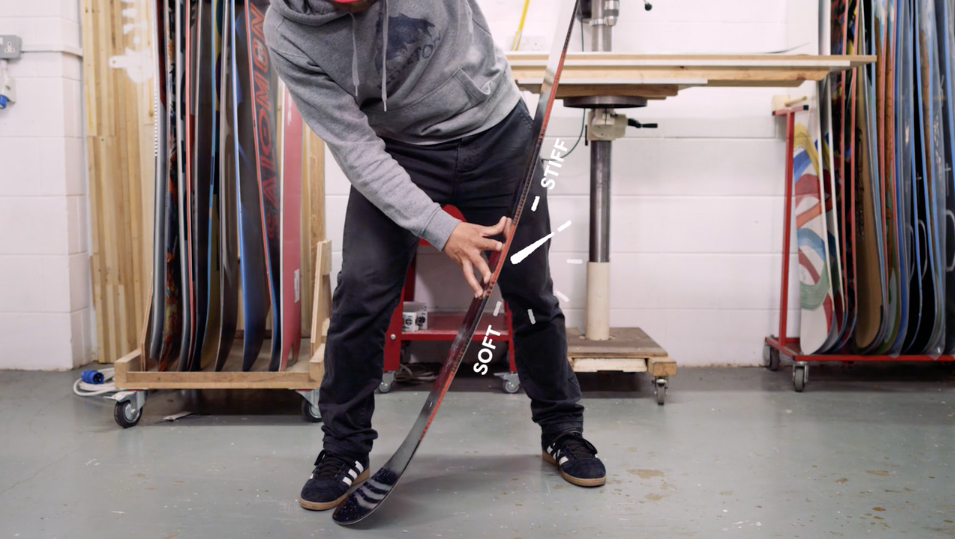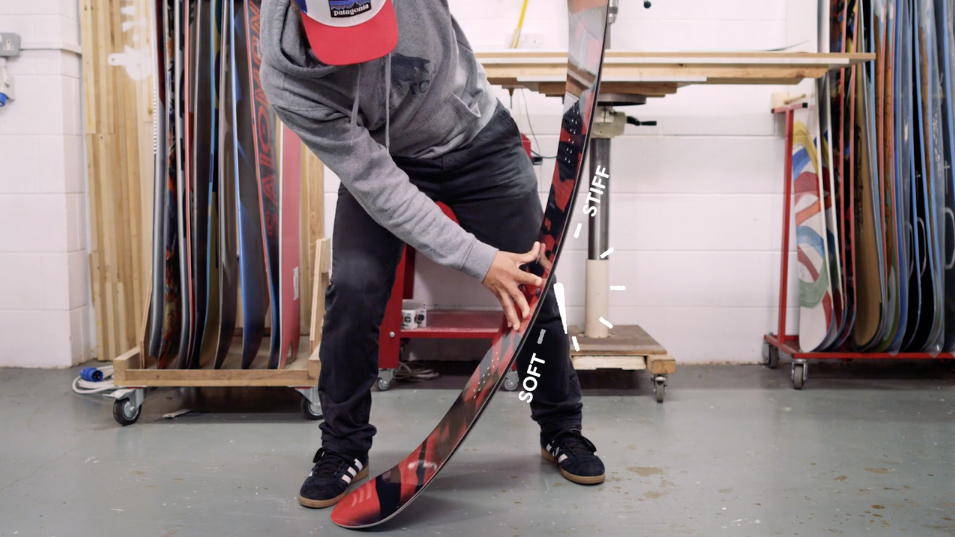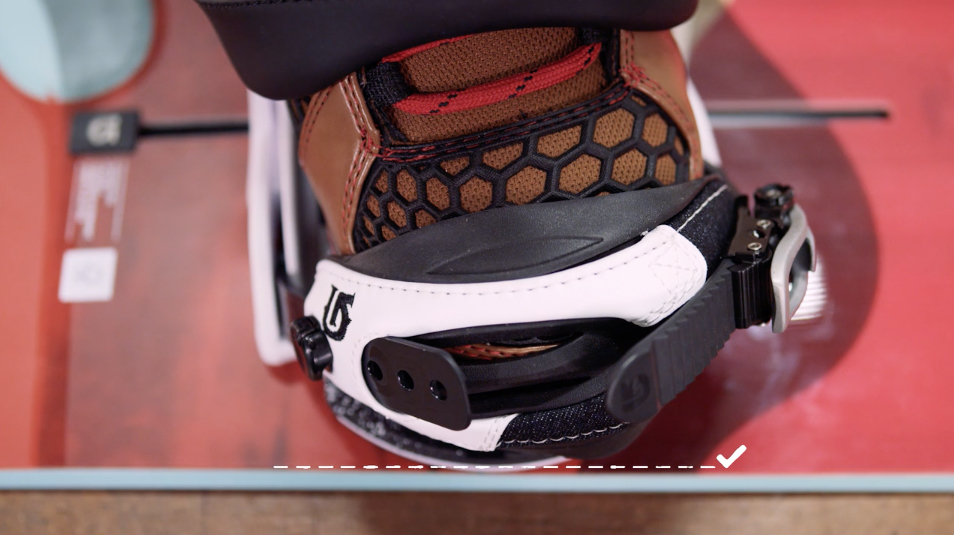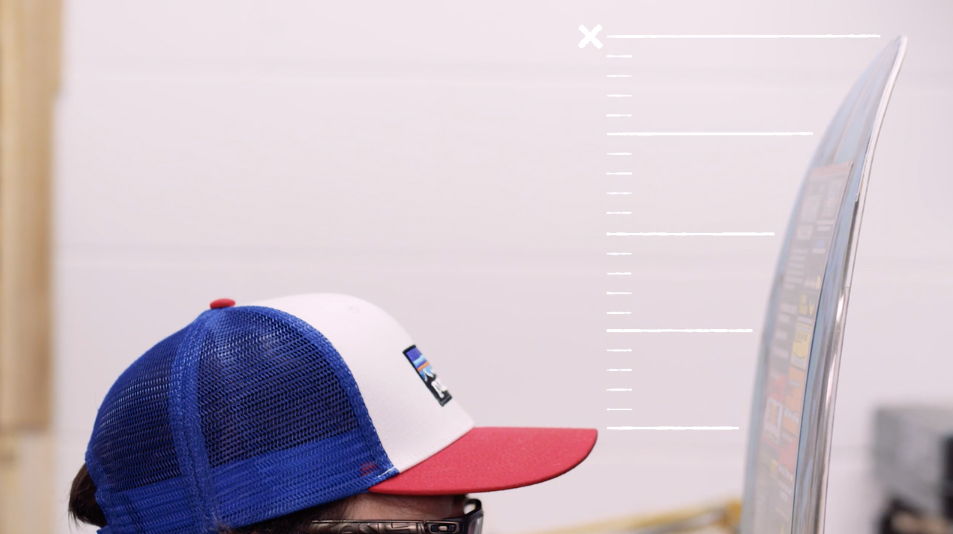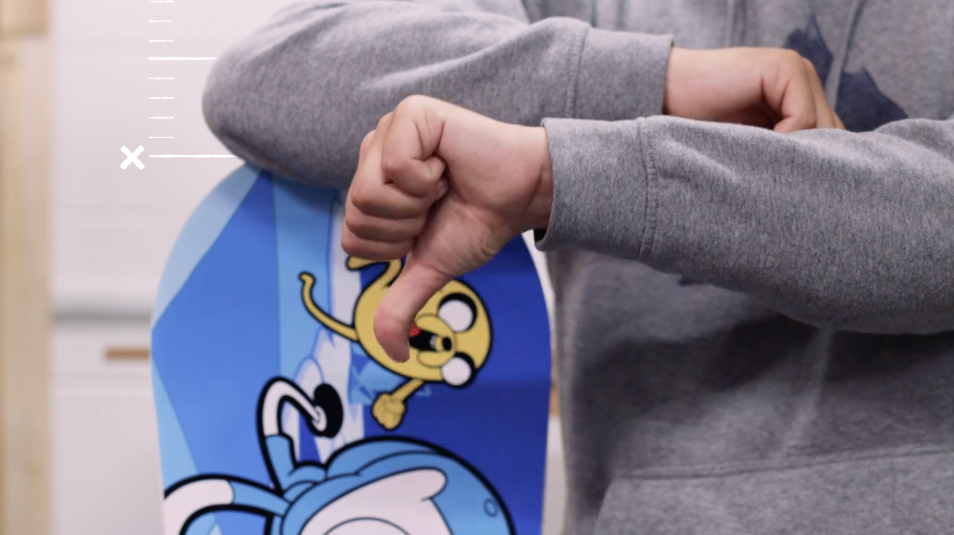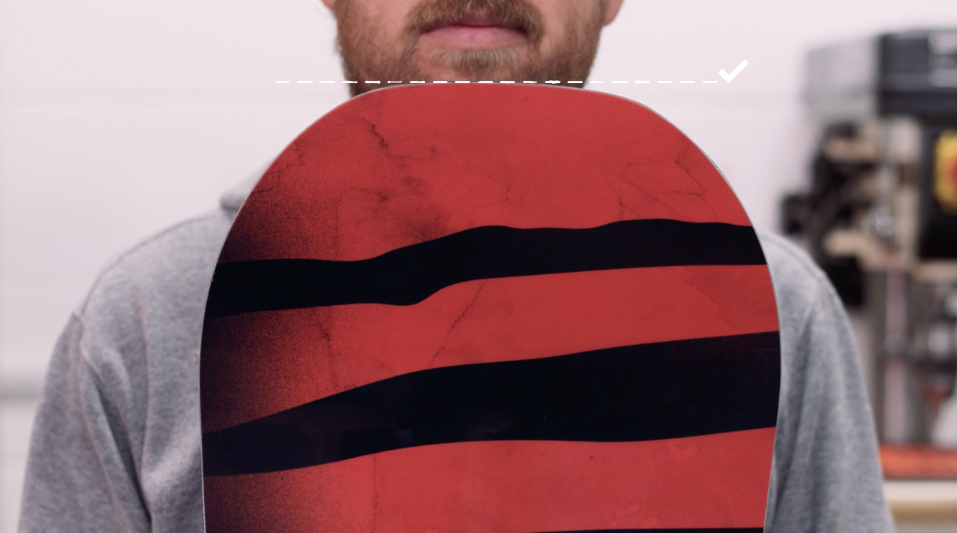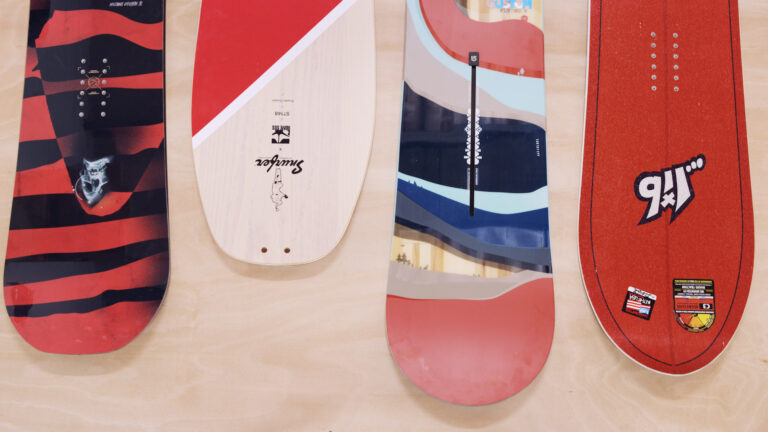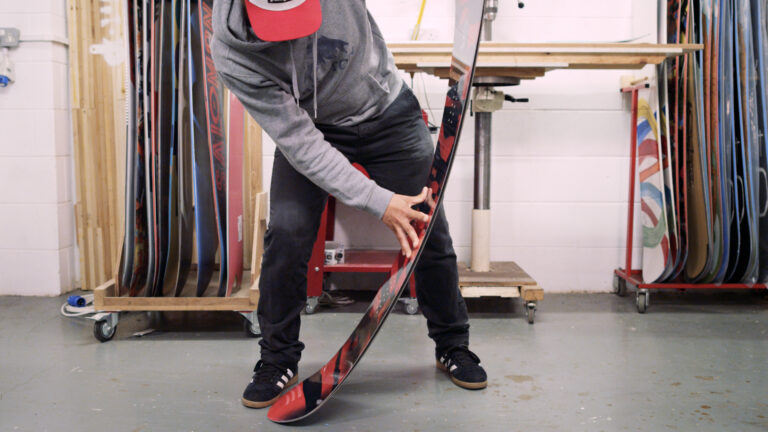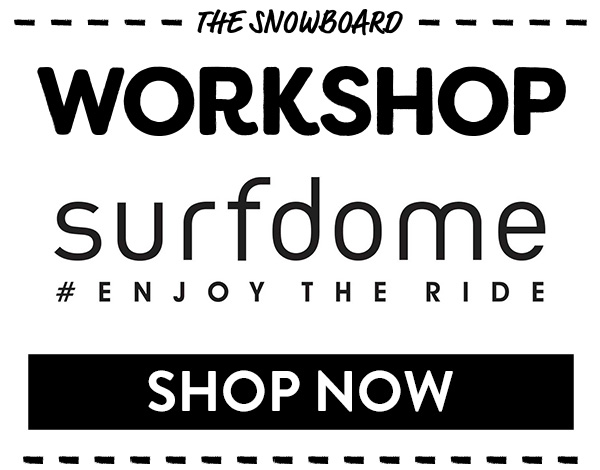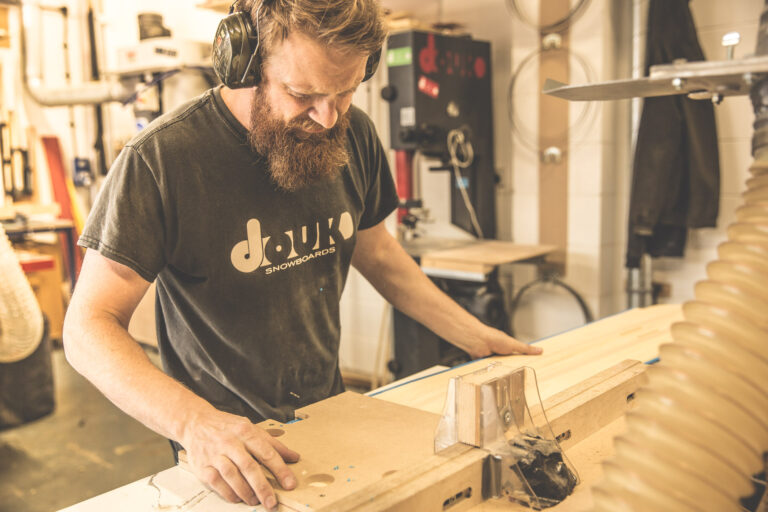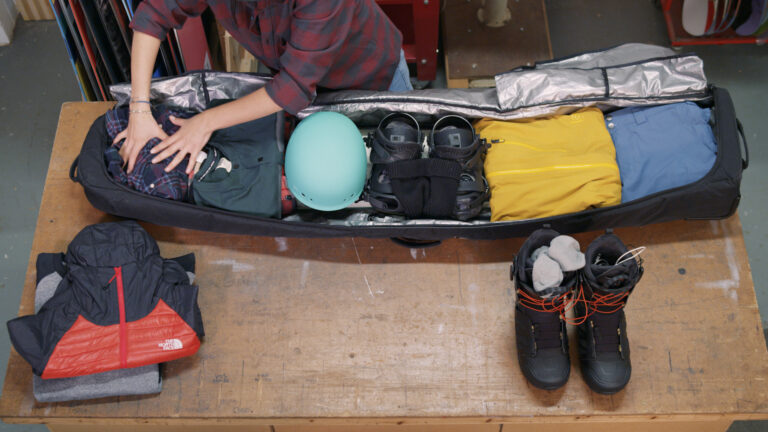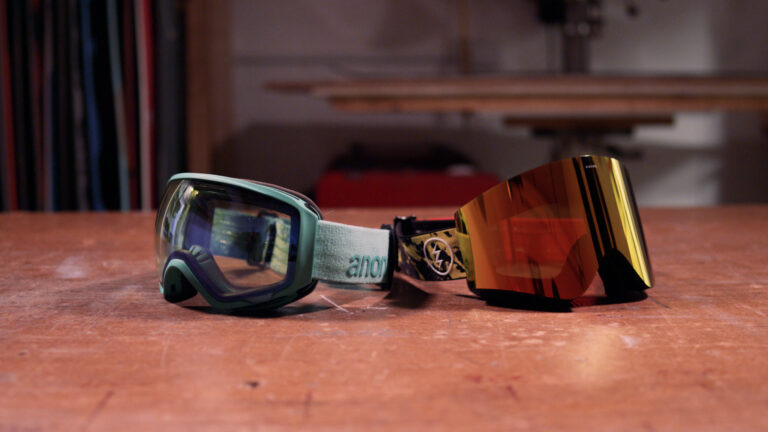If you’re new to snowboarding, the range of options and all the jargon involved can seem overwhelming. First thing’s first, do your research. Consult brand catalogues, retail sites and independent reviews and begin to formulate a shortlist around your riding style and budget.
Since you’re just starting out, you probably don’t want something too specific – like a directional powder board – so stick to models described as ‘all mountain’, ‘entry level’ or – if you’re keen to learn tricks – ‘freestyle’. A classic shape like the one below can handle pretty much any terrain.
